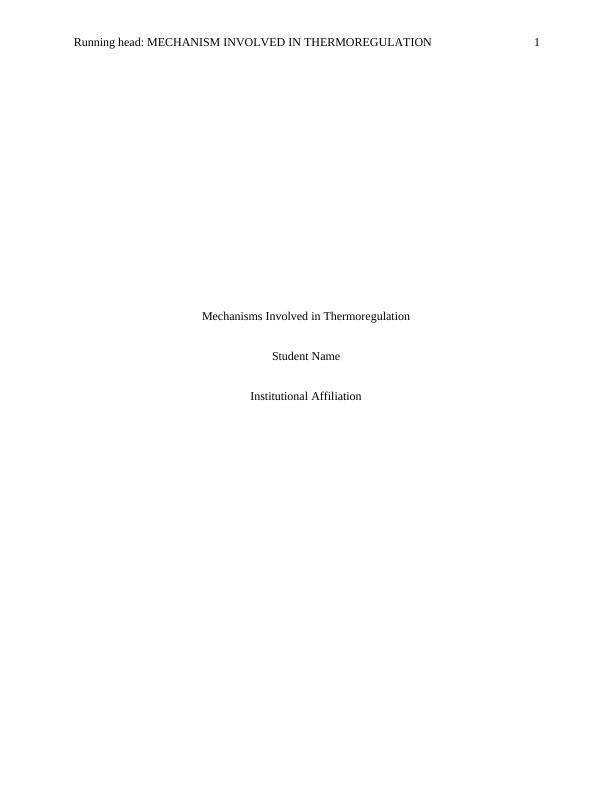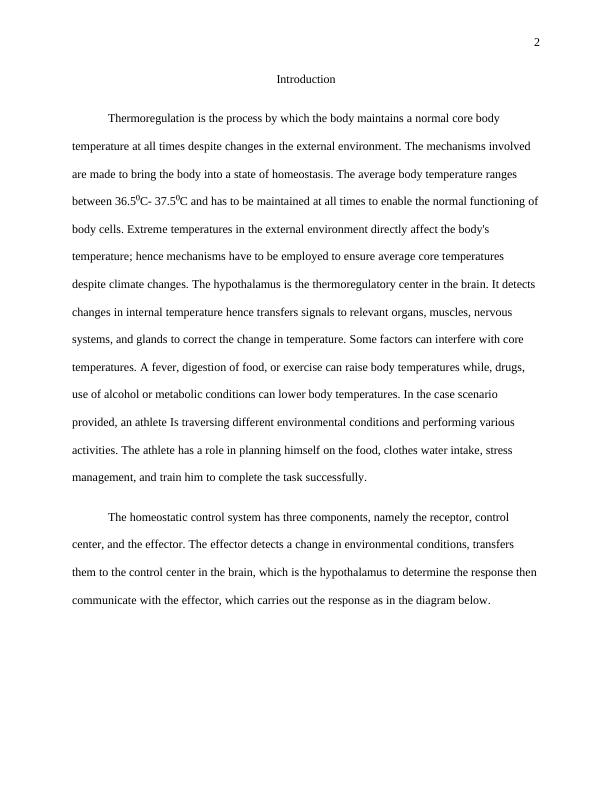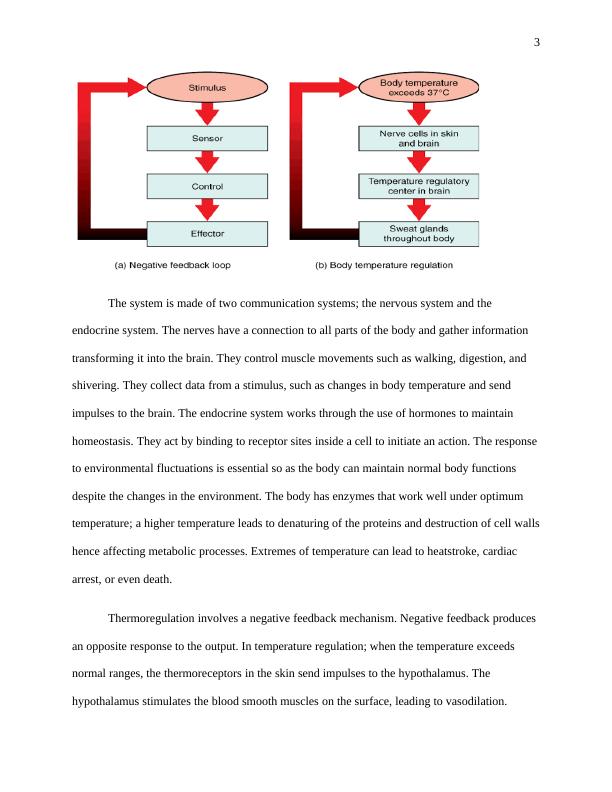Mechanisms Involved in Thermoregulation Report 2022
6 Pages1035 Words26 Views
Added on 2022-09-18
Mechanisms Involved in Thermoregulation Report 2022
Added on 2022-09-18
ShareRelated Documents
End of preview
Want to access all the pages? Upload your documents or become a member.
Homeostasis (Biology) Assignment
|21
|4083
|90
Bio-Science - Homeostasis and its Feedback System
|4
|433
|17
The Importance of Maintaining Health and Healthy Lifestyle Practices
|8
|1804
|485
Assignment on Muscular System
|7
|1495
|284
Homeostatic Feedback System for Elevated Body Temperature
|3
|508
|290
The Living Body: Components of a Reflex Arc, Endocrine Glands, Nervous and Endocrine System Coordination, Male and Female Reproductive System
|10
|1680
|312



